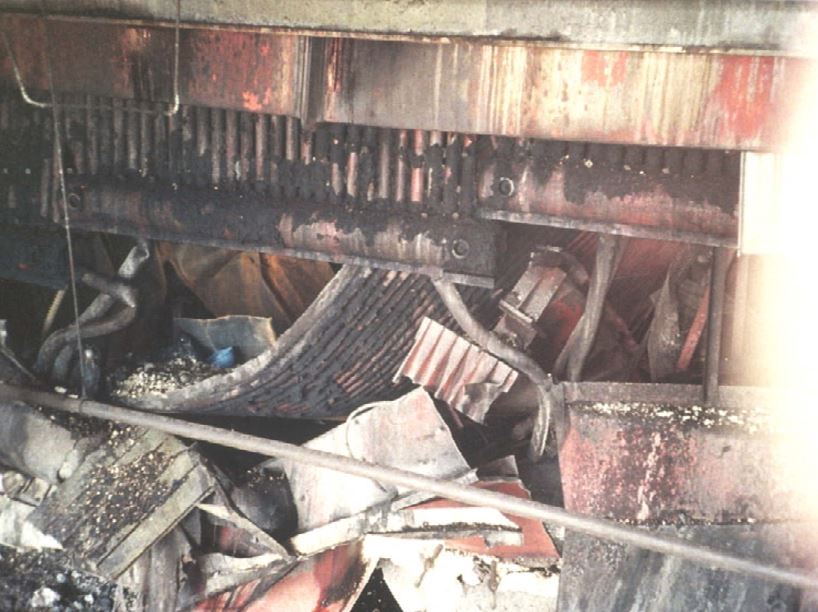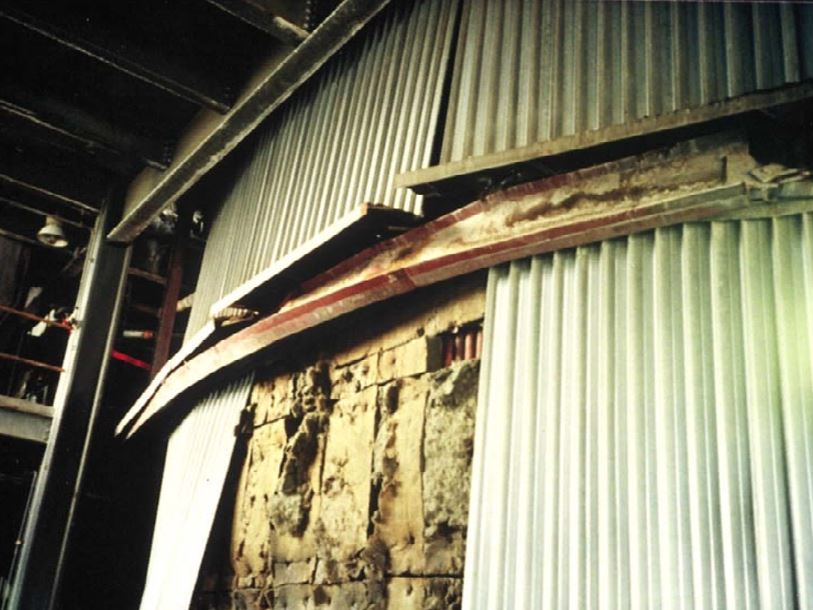
Recovery Boiler Emergency Shutdown
Due to the explosive nature of the molten smelt when in contact with water, all Kraft recovery boilers should be equipped with an emergency shutdown system (ESP). The system includes physical equipment installed, such as e.g. rapid drain valves, but also a complex control system logic, along with control room push buttons that will properly initiate it. And the third element to the proper system is the most important one: Operators. Knowledgeable operators can protect your boiler by early recognition of a leak and a confident initiation of an emergency shutdown. Let's discuss a few important topics here.
Despite significant improvements in operations, controls, and leak detection, recovery boiler explosions still happen. They range from small explosions with minimal effects to large explosions causing major damage to the recovery boiler.

Most notable and recent recovery boiler explosions are:
- USA in 2013: resulted in a complete closure of the entire paper mill
- Austria in 2014: resulted in a significant rebuilt of a recovery boiler and a significant downtime
- Canada in 2018: resulted in 49 days of downtime
Finding a leak
BRLBAC reports that a significant majority (over 80%) of leaks are detected by an operator walkdown followed by an operator in a control room. Knowledgeable operators recognize signs of leaks, most of the time audibly, when walking down the boiler. In the control room there are also tell-tale signs of a leak.
Flue gas side
Internal steam or water leak will result in increased furnace pressure or ID fan speed. Small gradual leak may never show noticeable increased pressure but may show an increased ID fan speed, if large enough. On the other hand, a large sudden leak will cause increased furnace pressure, sometimes to the point of tripping the boiler, while the ID fan may try to regulate the pressure without much success.

Water / Steam side
Escaping water or steam will show up in the deviation of the steam and feedwater flow. And again, small leak might be hard to detect due to inherent noise and deviations in the flows, while a large leak might be easier to detect. During a sudden large water leak, the steam drum level will start decreasing, despite adding more water into the boiler. On the other hand, a large sudden steam leak will cause drum level to go up as it is acting as a vent causing the pressure to decrease resulting in flashing of the water in the boiler which causes drum level to 'swell'.
Putting it together
The most catastrophic leaks happened when a large amount of water accumulated on a char bed. If an operator experiences a high furnace pressure and a low drum level combined within a short period of time, it is advisable to perform an emergency shutdown immediately.
Other signs
There are, of course, also other signs of a potential leak. The most notable are these:
- Noise in the furnace
- Steam or water visible in the furnace
- Flue temperature decrease
- Smelt color change
- and many others...

What does it take for a recovery boiler to explode?
Most of the leaks, even the ones on the furnace floor do NOT result in a boiler explosion. What does it take then for a destructive explosion to happen?
Historical evidence and case studies show that for an explosion to happen, it is necessary to accumulate a large amount of water onto the char bed. Perhaps having the water pool in one side of the bed, while molten smelt is sitting undisturbed in the other side. Then, a triggering event happens, such as a falling salt cake from the upper furnace initiating the explosion.
The most important takeaway here is that the most destructive explosions happened 1 to 1.5 hours after a significant leak occurred, while water was flowing into the furnace this all time.
Evidence also shows that most paper companies take too long of a time, seeking confirmations and evidence, before initiating an emergency shutdown procedure.
Did you know that
- Out of 116 explosions (prior to 2000) 5 of them caused a fatality
- Dissolving tank explosions are on the rise in the industry
- Four out of five floor tube leaks do NOT result in an explosion
- The largest explosions happened 1 to 1.5 hours AFTER tube leak occurred
- For a large explosion to happen, a large amount of water needs to enter the char bed and be available along with smelt, waiting for a trigger event
- Humans are resistant to recognize an emergency despite all the evidence. A plane was flying upside down in the clouds with 1 g force without pilots admitting the fact despite instruments telling them otherwise. A boiler explosion happened, when drum level was going down, furnace pressure up, yet an operator opened feedwater flow valve to 100% to 'save the boiler'. Training is crucial!

Training
Assuming a recovery boiler has a functional ESP system, the most important element in a successful protection of life and assets are operators.
Perform a regular training of all operators to recognize and be confident in pushing the ESP buttons. Additionally, perform training of support personnel. After the ESP is initiated, it is too late to seek information such as when is it safe to enter the boiler, or when is it safe to initiate water washing. Be prepared.
Train today and save a life. And a boiler.
If nothing else
If there is only one thing that you choose to take away from this article, then it should be this:
If there is a situation when the drum level significantly decreased (ALARM, TRIP) and the furnace pressure significantly increased (ALARM, TRIP) within a short period of time, there is a high probability of a large water tube leak and it is necessary to initiate ESP without a visual confirmation of the leak.
Help
If you need help analyzing your operational data to find statistical thresholds for furnace pressure and drum level in order to detect a large tube leak, let us know. If you'd like to learn more about boiler explosions, how to prevent them, how to detect leaks, and train your personnel, let us know. We are here to help protect your people. And the assets.



